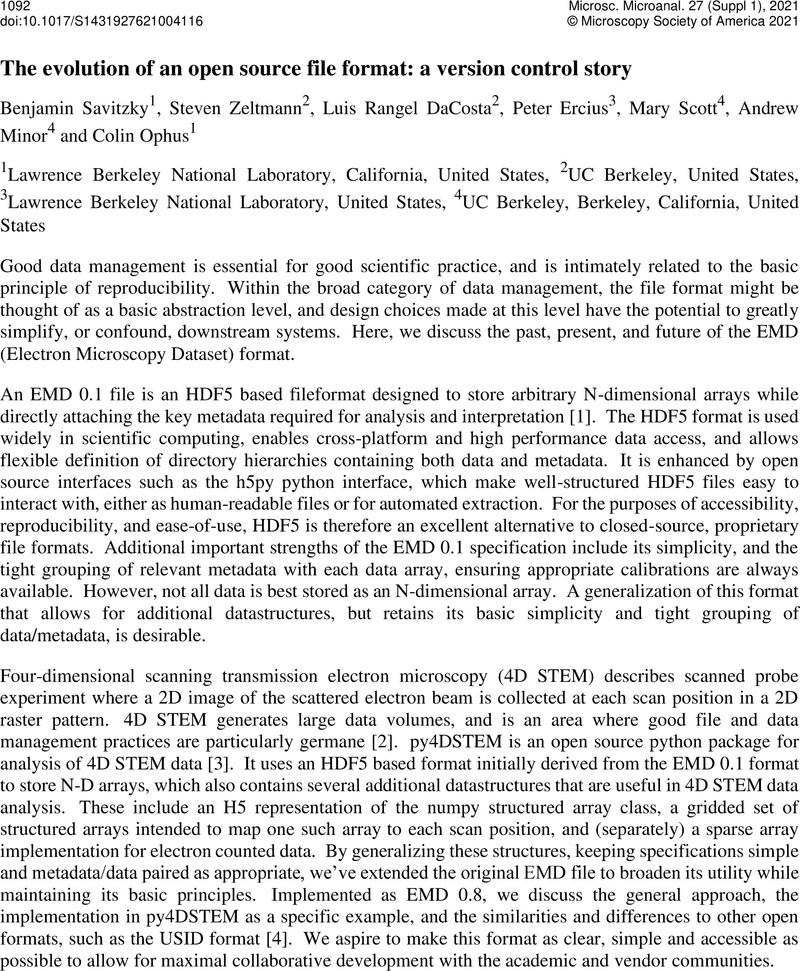No CrossRef data available.
Article contents
The evolution of an open source file format: a version control story
Published online by Cambridge University Press: 30 July 2021
Abstract
An abstract is not available for this content so a preview has been provided. As you have access to this content, a full PDF is available via the ‘Save PDF’ action button.

- Type
- Data Management, Version Control, and Multiformat Analysis in Electron Microscopy
- Information
- Copyright
- Copyright © The Author(s), 2021. Published by Cambridge University Press on behalf of the Microscopy Society of America
References
Nord, Magnus, et al. "Fast pixelated detectors in scanning transmission electron microscopy. Part I: data acquisition, live processing, and storage." Microscopy and Microanalysis 26. 4 (2020): 653-666.Google ScholarPubMed
Savitzky, Benjamin H., et al. "py4DSTEM: A software package for multimodal analysis of four-dimensional scanning transmission electron microscopy datasets." arXiv preprint arXiv:2003.09523 (2020).CrossRefGoogle Scholar
Somnath, Suhas, et al. "USID and Pycroscopy–Open Source Frameworks for Storing and Analyzing Imaging and Spectroscopy Data." Microscopy and Microanalysis 25.S2 (2019): 220-221.CrossRefGoogle Scholar
The authors gratefully acknowledge support from the Toyota Research Institute. Work at the Molecular Foundry was also supported by the Office of Science, Office of Basic Energy Sciences, of the U.S. Department of Energy under Contract No. DE-AC02-05CH11231. SEZ was supported by STROBE, a NSF Science and Technology Center.Google Scholar


